Ivan and Alicia had big plans for March 2022 – a Kyiv wedding and a honeymoon in Ireland – but Russia’s all-out invasion on February 24th that year meant they spent St Patrick’s Day not in Dublin but in the ranks of Ukraine’s volunteer territorial defence force.
They have since married and Alicia has returned to a job in IT, but Ivan now spends less time working as a lawyer than he does serving as a combat medic in the Hospitallers battalion, which supports army units fighting on the front line.
He joined about 150 other military personnel and volunteers in Kyiv this month, for a training course run by Irish medics who were visiting Ukraine for the fourth time under a UCD-led initiative called the Ukraine Trauma Project.
For the Ukrainians, it was a chance to learn life-saving skills that they might use as soon as they returned to the front, which some did straight after the two-day course; for the instructors, these visits give a glimpse into lives that have been changed in previously unimaginable ways by Russia’s attempt to wipe its neighbour off the map.
“I was in Kyiv region at the start of the full-scale war and since then I’ve also been in Kharkiv, Donetsk and Zaporizhzhia,” says Ivan, who does not want his surname to be published, listing three eastern provinces where fighting is often intense.
Teams from the Hospitallers give medical help to different military units and work at various points along the line of evacuation for a wounded soldier, from near the front line to a so-called stabilisation point a few kilometres away and then on to a hospital in a nearby town.
Ivan’s team was attached to brigade that was fighting in Avdiivka in Donetsk region last year, operating a stabilisation point in a village a few kilometres from the industrial town. Russian troops are now trying to storm the village, called Ocheretyne, after seizing what remains of Avdiivka in February.
Ukraine hopes a US decision this week to release $60 billion (€56 billion) in military aid will help stiffen its defences, but Russia’s increasing use of explosive drones and powerful plane-launched “glide bombs” is only making life more dangerous for front-line troops and the medics who treat them.
“In many places, medevacs (medical evacuations) are only possible now with armoured vehicles, because of attacks by drones and artillery and aviation,” says Ivan (33), who also teaches basic emergency medical care to soldiers and volunteers.

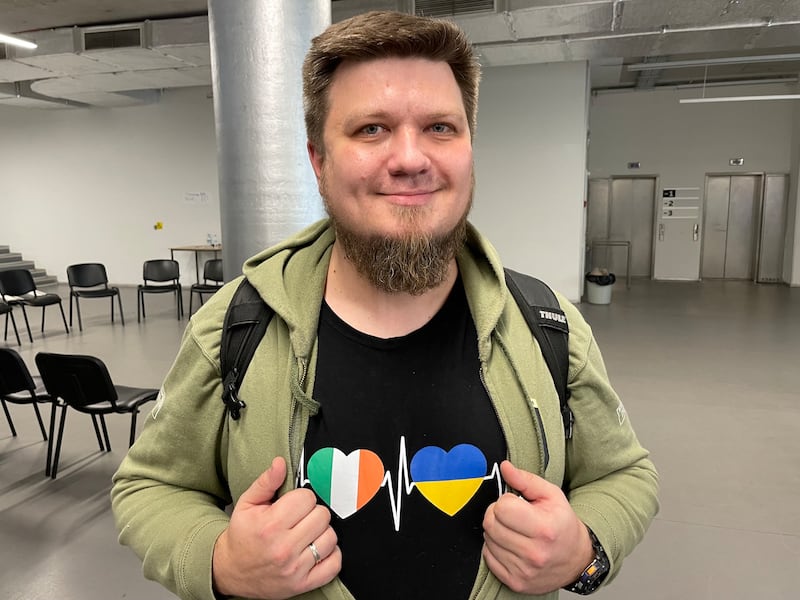
In Kyiv, he and colleagues are being shown how to give tranexamic acid (TXA) – a medicine to control heavy bleeding – to patients suffering such severe blood loss that it cannot be put into their veins. The method involves drilling into a bone in the arm or leg and inserting a needle through which TXA and other vital drugs can be administered.
“When we teach this skill to paramedics back home, they might not use it for years. Here, we know they’ll need it really quickly,” says Ben Heron, an advanced paramedic with Ireland’s national ambulance service who also served in the Defence Forces and the Irish Air Corps’ search and rescue unit.
He has taken part in all four training visits organised by the Ukraine Trauma Project, which is led by Prof Gerard Bury, director of UCD’s Centre for Emergency Medical Science, and UCD colleague Prof Chris Fitzpatrick.
“It’s an eye-opener of a trip. You get to interact with the Ukrainian medics really well and they’re hungry for knowledge,” Heron says. “There’s lots of evidence that shows TXA makes a difference, so we’re giving them that extra skill. If we help to send one kid back home alive to his mum and dad, or a father home to his kids, then it’s worth it.”
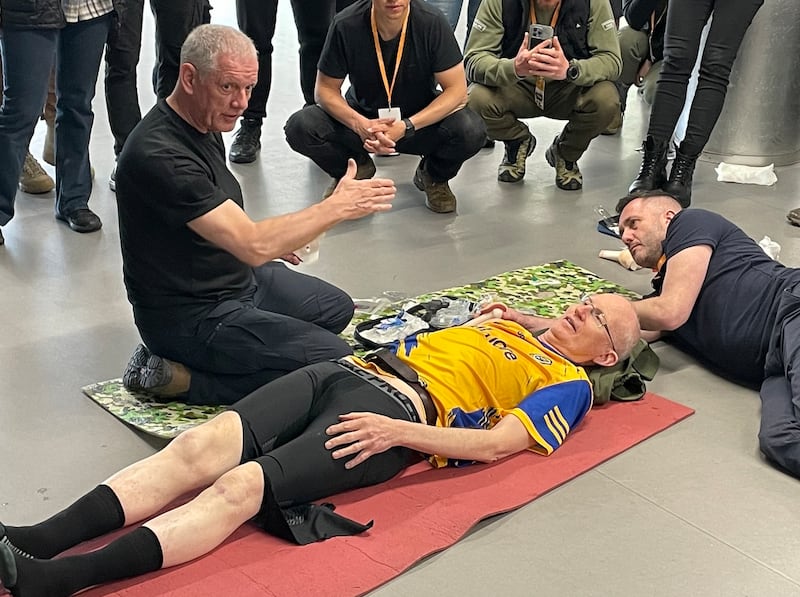
With Ukrainian airports closed, it took the Irish team 24 hours to reach Kyiv via Poland. Long delays on the Polish border jeopardised the arrival of equipment for training and distribution, so it was rerouted via Slovakia thanks to the One 4 Humanity charity of Irish businessman Shane Leahy and volunteer drivers Peter and Frank Gunter.
Ira Lebedeva (27) travelled in the other direction to Kyiv, arriving on an overnight train from her military unit in the partly occupied Donetsk region, 650km to the east.
Until this year she was a vet in Kharkiv, Ukraine’s second city, which endures daily drone, missile and bomb attacks from across the Russian border just 35km away.
“I thought the war wouldn’t last too long. But then you realise it’s not finishing but is actually getting worse, especially in Kharkiv,” she says. “And I felt like I wasn’t doing anything useful in my job, just treating Yorkshire terriers and Pomeranians for women with too many stupid requests. I thought, what the f**k am I doing? I had to do something else.”
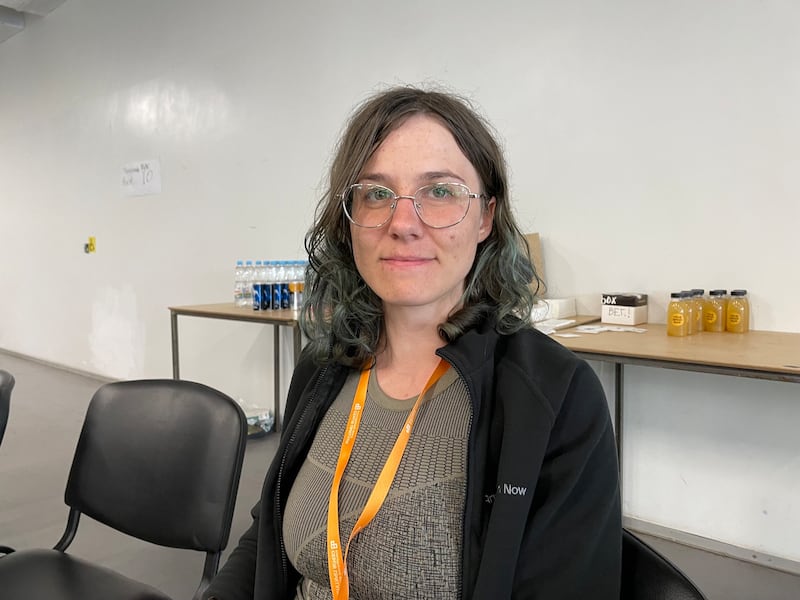
Little dogs were not Lebedeva’s only animal patients: she scrolls on her phone from a recent photo of a soldier’s wound that she stitched up, back to a picture of her monitoring an anaesthetised lioness from Kharkiv zoo.
“The soldiers say they’re worse than animals. Sometimes it’s true,” she says with a smile. “My boyfriend is in the military and he told me I was stupid to join. But it was exhausting in civilian life, being nervous all the time, it made me crazy ... I don’t feel that way now.”
If Lebedeva decided relatively recently that she wanted to be near the sharp end of Ukraine’s war effort, Mykyta (33) already had a bag packed and was ready to go when Russia launched its all-out attack more than two years ago.
The Kyiv-based photographer had felt “powerless” when his younger brother suffered a facial injury, and so began taking courses in basic emergency care that he thought he might need one day: “And in hindsight it was a good decision,” he says.
“I had a lot of friends in the Hospitallers even before the full-scale invasion, so I felt pretty confident that that was where I wanted to be if the sh*t hit the fan. Which it did,” he adds.
“So on February 24th [2022] I already had all my stuff packed – a backpack, a bulletproof vest and other things – so with the sound of air raids I just grabbed my stuff and joined the Hospitallers.”
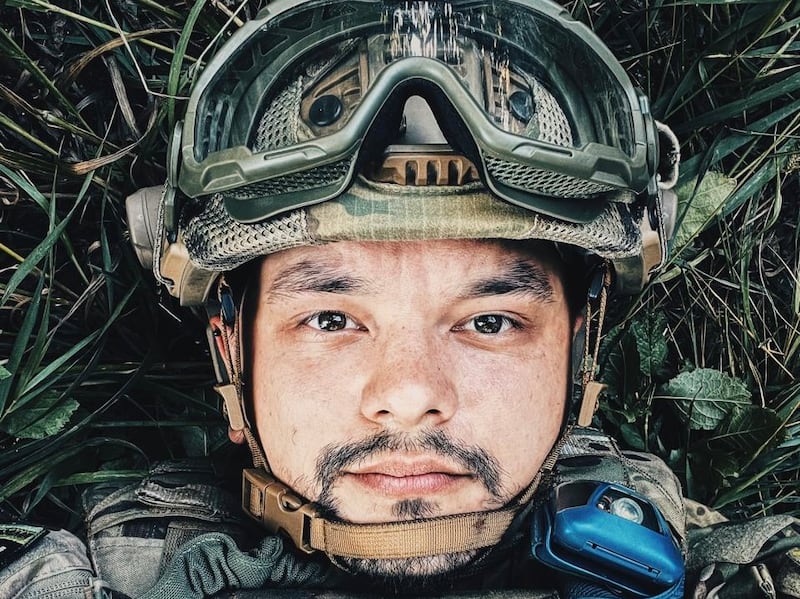
Mykyta’s team has worked mostly in Donetsk region, including near Avdiivka, though he recently returned from the Kupiansk area of Kharkiv region where fighting is intense and Russia has focused a large contingent of troops and armour.
They use TXA “all the time”, he says, often as part of what his team calls their “hobo package”.
“When we get a person with obvious bleeding or trauma that requires TXA, we say we’ll go with the hobo package. It’s an antibiotic, a painkiller and TXA. We just say ‘hobo package!’ and everyone knows what it means,” he explains.
“You can always do better, of course, but I’m proud to say that we’ve done about 200 evacuations in our time and each and every one that we grabbed alive was delivered alive to the next level of help.”
Mykyta says his team has had “a bunch” of close calls in the east, and that Russia is extending the range of its cheap attack drones and firing more quickly at targets, increasing the danger to medics working even 15km from the front line.
“We’re used to working with healthcare workers in Ireland who put themselves on the line for their patients, but this is a completely different level,” says Prof Fitzpatrick, who credits the HSE, Minister for Health Stephen Donnelly and the Irish Red Cross for providing key support to the training project.
“These Ukrainians are putting their own lives at risk every day, and there are people here who have come to the course straight from the front line and will be returning immediately afterwards. It’s tremendously inspirational.”
One of them is Anna Biganych, a dermatologist and GP from Lviv in western Ukraine who now serves as a military doctor in Kharkiv region, near the eastern border.
Ukrainian law states that women cannot be conscripted into the army, but Biganych (32) signed up less than a week after the full invasion.
“I think humans are creatures that can adapt to anything. Maybe the hardest thing is to change from a comfortable life and routine and learn how to handle a situation that can change every minute or every second,” she says.
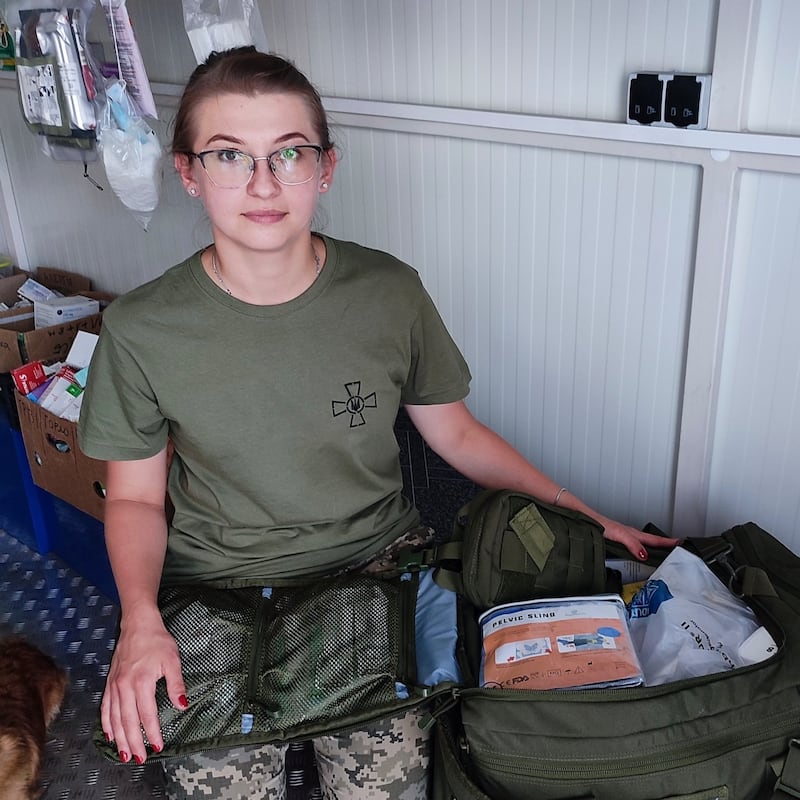
“Of course everyone can feel scared. Only a fool never feels scared,” adds Biganych, who will return to the east the next evening with a TXA kit and other medical equipment provided by UCD’s Ukraine Trauma Fund.
This is a third visit home on a wartime training mission for Lyudmyla Zakharchenko, a consultant paediatrician at Dublin’s Rotunda Hospital.
“Every single time it’s very hard and emotional, because I am coming back home and this will always be home,” she says.

“If at least one life is saved because of this, then it is already a great achievement. The most important thing we can do is give these medics the best training we can, so they can save lives in the future,” adds Dr Zakharchenko, who has lived in Ireland for more than 20 years. “These are amazing people, and we will never stop thanking them for the hard and important job that they are doing.”
The courses are held in a hall in central Kyiv provided by the Serhiy Prytula Charity Foundation, which has raised tens of millions of euro for Ukrainian causes under the leadership of its eponymous founder, a popular actor and comedian.
[ Nine in 10 families who hosted Ukrainian refugees had positive experienceOpens in new window ]
A short walk away through the blossom-filled city is St Michael’s golden-domed monastery, where soldiers gather almost every day for the funerals of comrades, and photographs of thousands of the fallen cover a memorial wall. Before leaving for home, the Irish medics light a candle here for their trainees and for Ukraine.
Ivan insists that his own journey to Ireland has only been postponed, not cancelled, by the war.
He wants to drive around the country visiting places mentioned in the Star of the County Down, improve his Irish in the Gaeltacht, and dreams of one day running a Ukrainian-Irish pub.
“I have a Gaeilge textbook. I open it, cry a little, close it and promise myself that I will return to it,” he says, rueing again how he and Alicia had everything planned for their honeymoon in Ireland before Russia’s full invasion threw millions of lives into flux.
“It all went very bad,” Ivan says. “I just hope I will get there in the end.”
- Sign up for push alerts and have the best news, analysis and comment delivered directly to your phone
- Find The Irish Times on WhatsApp and stay up to date
- Listen to our Inside Politics podcast for the best political chat and analysis











